Alright, folks, if you’re on the hunt for furniture that’s stylish, sturdy, and doesn’t break the bank, let me put Plank+Beam on your radar. I’ve been through the wringer trying to find pieces that look good and last, and trust me, this brand caught my eye for all the right reasons.
With solid wood construction, a direct-to-consumer model that keeps prices sane, and a vibe that fits just about any home, Plank+Beam feels like a no-brainer.
Stick with me—I’m spilling my real-life take on their stuff, from unboxing to everyday use, so you can see why it’s worth your hard-earned cash.
My Experience With Plank+Beam
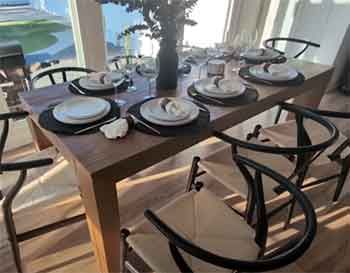
So, picture this: I’d been eyeballing a new dining table for months.
My old one—a Craigslist steal for $50—was wobbly and barely big enough for me and my partner, let alone when friends came over.
I wanted something solid, something that screamed “I’ve got my life together,” but I wasn’t about to drop a grand on it. Enter Plank+Beam.
I stumbled across their site during a late-night scroll, lured in by the promise of solid wood at prices that didn’t make me choke on my coffee.
I settled on their 60-inch modern dining table in the blonde wirebrush finish. It was a holiday sale, so I snagged it for $352 with free shipping—down from $470. Score! When it arrived, I’ll admit, I was a little nervous.
The box was hefty, and I’m no DIY pro. But I cracked it open, and right away, I could tell this wasn’t some flimsy particleboard nonsense. The wood felt legit—heavy, smooth, with a grain that had character.
Each piece had a little numbered sticker, and the instruction booklet was all pictures and arrows, no words, which made me laugh. It was like furniture assembly charades.
My partner and I tackled it together, armed with a Phillips screwdriver and the included hex keys. It took us about two hours, with a few moments of “wait, does this go here?” as we lined up the pre-drilled holes. Nothing too stressful, though—think of it like a grown-up Lego set.
Once it was up, I stood back and just stared. This table was gorgeous—clean lines, a warm blonde tone that wasn’t too yellow, and a sturdiness that made my old table look like a toy.
We’ve been using it for months now, and it’s held up to spilled wine, heavy casserole dishes, and my habit of propping my feet up while I work. It’s not just furniture; it’s a vibe, and I’m hooked.
Pros of Plank+Beam Furniture

Let’s talk about why Plank+Beam has me singing its praises. I’ve lived with this table long enough to know what’s what, so here’s my take on the good stuff.
- Solid Wood That Actually Lasts
First off, the fact that Plank+Beam uses 100% solid wood—like knot-free New Zealand pine or rubberwood—makes a huge difference. I’m not hauling around some hollow, veneered junk that’ll collapse if you sneeze on it. This table feels like it could take a beating and still look classy.
The weight alone tells you it’s built to stick around, not just for a year or two, but for decades if you treat it right. I love knowing I’ve got something that might even outlast me.
- Wallet-Friendly Pricing
Here’s where Plank+Beam gets sneaky-smart. By cutting out the middleman and selling straight to you, they keep costs way lower than those big-name stores. I mean, $352 for a solid wood dining table? That’s not just a deal; it’s a steal.
Compare that to the $1,000+ tags I saw at places like Pottery Barn, and you’ll get why I’m impressed. They’re not skimping on quality either—it’s like they’ve cracked the code on affordable luxury.
- Timeless Style That Fits Anywhere
I’m no interior designer, but I know what looks good, and Plank+Beam nails it. Their pieces have this transitional thing going on—modern enough to feel fresh, but classic enough to not scream “trend.”
My dining table fits our cozy apartment like it was made for it, but I could see it working in a farmhouse or a sleek loft too. You’re not locked into one aesthetic, which is clutch if you like switching things up.
- Easy Assembly (Mostly)
Okay, I won’t lie—putting it together took some elbow grease, but it wasn’t a nightmare. The instructions were clear enough, and all the hardware came in the box. You just need a screwdriver and maybe a buddy to flip it upright at the end.
For someone like me who’s more “enthusiastic amateur” than “handyman,” it was doable. Plus, there’s a weird satisfaction in building your own furniture, right?
- Eco-Friendly Vibes
This one’s a bonus I didn’t expect to care about, but I do. Plank+Beam sources their wood sustainably, and they use low-VOC finishes that don’t stink up your house with chemicals.
I feel a little better knowing my table isn’t secretly poisoning me or the planet. It’s not the main reason I bought it, but it’s a nice perk that makes me like them even more.
Cons of Plank+Beam Furniture
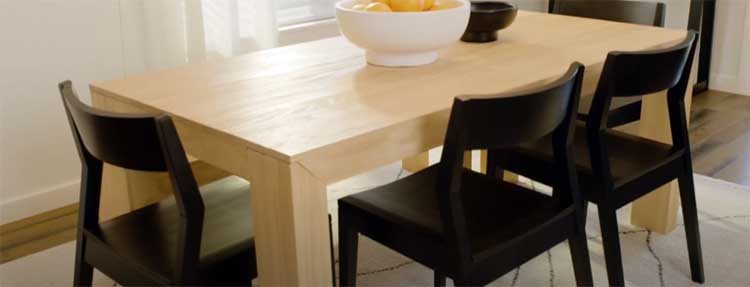
Nothing’s perfect, and Plank+Beam’s got its quirks. I’ve run into a few hiccups, and I’ve heard some grumbles from others too. Here’s the real talk.
- It’s Heavy as Heck
Solid wood sounds great until you realize it weighs a ton. Moving my dining table to vacuum underneath? Yeah, that’s a workout. If you’re someone who loves rearranging your space every month, this might drive you nuts.
I’ve made peace with it staying put, but it’s worth knowing before you commit.
- Limited Customization Options
I lucked out with the blonde finish, but if you’re picky, Plank+Beam might leave you wanting. They’ve got a handful of styles and finishes—natural, gray, white, whatever—but you can’t tweak the dimensions or get crazy with colors.
I didn’t mind, but if you’re dreaming of a neon green table, you’re out of luck here.
- Assembly Can Be a Puzzle
I said it was easy-ish, but it’s not foolproof. A couple of those pre-drilled holes were a smidge off, and we had to muscle things into place. I’ve read some folks had worse luck—cracked wood or missing screws.
It worked out for me, but it’s not a guaranteed breeze. If you’re not patient, you might curse their name mid-build.
- Availability Isn’t Everywhere
Plank+Beam isn’t in every store, and shipping can take a beat—mine took about 10 days. If you’re in a rush or live somewhere remote, that could be a snag.
They’re online-only, which keeps prices down, but it means you can’t test-drive a piece before buying. I rolled the dice and won, but it’s a gamble.
Maintenance Tips For Plank+Beam Furniture
Alright, you’ve got your Plank+Beam piece—now how do you keep it looking sharp? I’ve learned a few tricks to make sure my table stays a stunner, and I’m sharing them with you.
- Wipe Spills Pronto: Wood’s tough, but it’s not invincible. Spill some wine or sauce? Grab a damp cloth and wipe it up fast. I learned this the hard way when a coffee ring tried to set up camp—quick action saved the day. The lacquer finish helps, but don’t let liquids sit there plotting against you.
- Skip the Harsh Cleaners: No ammonia, no bleach, no abrasives—those’ll chew up the finish faster than you can say “oops.” I stick to a mild soap and water mix or a vinegar solution for stubborn spots. Keeps the wood happy and me stress-free. Plank+Beam’s low-VOC finish deserves gentle love, not a chemical assault.
- Protect It from Sunlight: I noticed my table’s spot near the window was fading a tad, so I shifted it. Direct sun can bleach the color over time, especially with lighter finishes like mine. If you can’t move it, toss a curtain up or something. It’s like sunscreen for your furniture.
- Seal It for Extra Armor: Here’s a pro move I picked up: I sealed my table with polyurethane after assembly. It’s optional, but that extra layer smooths out the texture a bit and adds protection. Took me an afternoon, and now I don’t sweat spills as much. Just make sure it’s dry before you start piling plates on it.
- Tighten Up Occasionally: Wood moves with humidity—fact of life. Every few months, I check the screws and give ‘em a little twist if they’re loose. Don’t crank too hard, though; you’ll strip something. Keeps everything snug and wobble-free, especially with a table that sees daily action.
Comparison With Other Brands: Plank+Beam Vs. The Rest
Alright, let’s put Plank+Beam in the ring with some heavy hitters—Kincaid Furniture, AllModern Furniture, and James & James Furniture. I’ve scoped out what these brands bring to the table (pun intended), and I’m breaking it down head-to-head style.
My dining table’s been my trusty sidekick for months now, so I’ve got a solid baseline to judge from. Here’s how Plank+Beam holds its own against the competition—let’s see who comes out swinging.
- Plank+Beam Vs. Kincaid Furniture
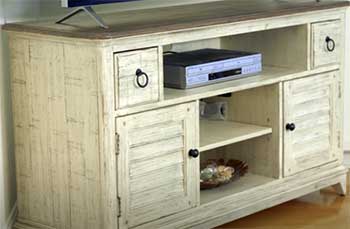
Kincaid’s the old-school champ—think traditional, handcrafted vibes with a legacy going back decades.
They’re all about hardwood like cherry and oak, and their dining tables start around $1,200, climbing fast if you want custom touches.
My Plank+Beam table, at $352 on sale, feels like a lightweight contender in price, but don’t sleep on it.
Kincaid’s got that heirloom polish—ornate edges, rich stains—perfect if your vibe is “grandma’s dining room but fancy.” Plank+Beam keeps it simpler, more modern, with knot-free pine or rubberwood that’s still solid but less showy.
Durability?
Kincaid might edge out slightly with its beefier hardwoods, but I’m not worried about my table giving up anytime soon. Kincaid’s for the deep-pocketed traditionalist; Plank+Beam’s my pick for real-life budgets and clean lines.
- Plank+Beam Vs. AllModern Furniture
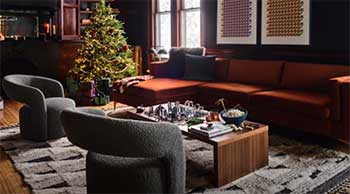
AllModern’s the cool kid—mid-century flair, bold designs, and an online-only hustle like Plank+Beam.
Their “Evelyn” dining table, solid walnut, runs $850—double my Plank+Beam steal.
Style-wise, AllModern’s got swagger; that walnut grain and angled legs scream Instagram-worthy.
My Plank+Beam table’s blonde finish is quieter, more versatile—it fits anywhere without yelling for attention. Quality’s a toss-up—both use solid wood, but AllModern’s walnut feels a touch more luxe than my pine.
Assembly’s DIY for both, though AllModern’s reviews hint at trickier setups. Price is where Plank+Beam flexes—half the cost, same sturdiness. If you’re chasing trendy vibes, AllModern’s your jam; if you want value and understated charm, I’m sticking with Plank+Beam.
- Plank+Beam Vs. James & James Furniture
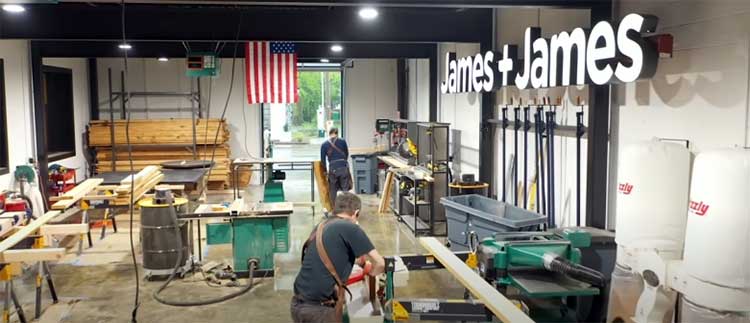
James & James is the artisanal wildcard—Texas-made, custom-focused, with tables starting at $1,000 and up. They’re big on reclaimed wood and rustic heft, like their “Farmhouse Trestle” at $1,400. My Plank+Beam table’s a featherweight in comparison, price-wise, but it’s no slouch.
James & James offers insane customization—pick your wood, finish, size—while Plank+Beam’s like, “Here’s what we’ve got, take it or leave it.” Their tables feel beefier, with that hand-hewn charm, but mine’s held up to daily chaos without a creak.
James & James ships fully assembled (bless them), unlike my two-hour Plank+Beam build. If you’ve got cash to burn and love rustic swagger, James & James wins; for me, Plank+Beam’s simplicity and savings hit the sweet spot.
So, where does Plank+Beam land?
It’s not the fanciest (Kincaid), the trendiest (AllModern), or the most custom (James & James), but it’s got a magic combo: solid wood, killer prices, and a look that works anywhere. Kincaid’s too pricey and old-school for my taste, AllModern’s chic but costs more, and James & James feels like overkill unless I’m building a forever home.
My Plank+Beam table’s been a champ—practical, pretty, and proof you don’t need to splurge for quality. It’s the everyman’s hero in this lineup, and I’m not mad about it.
Frequently Asked Questions (FAQ)
Plank+Beam’s stuff is designed in-house and built in their own facility, which I think is in the U.S.—they’re based in Pennsylvania, so that tracks. They’re all about controlling the process from sketch to shipping, which is why the quality’s consistent. No outsourcing to sketchy factories here.
Yep, they’re big on this. Their finishes are low-VOC, meaning no nasty fumes or chemicals lurking in your air. I didn’t smell a thing when I unboxed my table, and they’ve got GREENGUARD Gold certification on some pieces. Safe for you, me, and even the kiddos.
Tough one! Italy’s got a rep for sleek, high-end design—think Milan showrooms. Denmark’s all about that minimalist Scandi vibe. And the U.S. has Amish craftsmen making stuff that lasts forever. Best depends on what you’re after—Plank+Beam’s American-made approach holds its own for value and durability.
Totally. Rubberwood’s in a lot of Plank+Beam pieces, like table legs, and it’s solid—dense, durable, takes stains well. It’s not as fancy as oak, but for chairs, it’s a workhorse. I’d sit on it without worrying about a collapse.
Conclusion: Plank+Beam’s Worth Your Attention
So, there you have it—my unfiltered take on Plank+Beam. From the moment I unboxed that dining table, I knew I’d found something special. It’s solid, stylish, and priced so you don’t need to sell a kidney to afford it.
Sure, it’s got flaws—heavy, not super customizable—but the pros outweigh them big-time. If you’re after furniture that’s built to last without the luxury markup, Plank+Beam’s your ticket. Go on, give it a shot—you won’t regret it.
